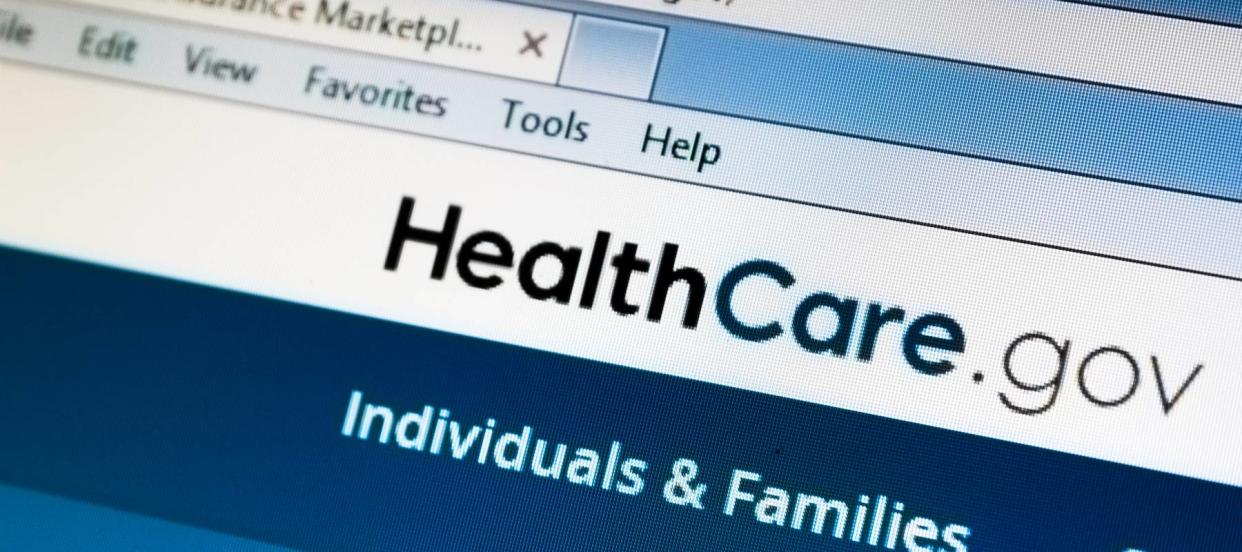You may soon be getting a COVID 'stimulus check' from your health insurer

Private insurance companies are expected to dole out $2.1 billion in rebates to more than 10.7 million policyholders this fall, according to analysis from the Kaiser Family Foundation.
That sum will be the second-highest amount ever issued under the Affordable Care Act (ACA) after last year’s record-breaking $2.5 billion in refunds.
For the average consumer who bought health insurance on the individual market, that means an average cash rebate of $299 in the fall.
Here’s what you need to know about how these rebates will work.
Why are we getting these rebates?

These rebates are coming through because a number of insurance companies failed to meet the ACA’s medical loss ratio threshold in 2020, which requires insurers to spend at least 80% of premium revenues on health care claims or quality improvement activities.
Last year, some companies fell short of their threshold as health spending and utilization dipped during the pandemic.
This happened in part because providers cancelled elective procedures and consumers opted to forgo routine care to avoid potential exposure at a doctor’s office.
But everyone continued to pay their premiums, resulting in higher levels of profits for the insurance companies who had set their rates well before the pandemic hit.
Who should expect a rebate?

Not every policyholder can expect some cash back and how much you’ll get varies by market.
The majority of the pot — $1.5 billion — will go back to about 5 million individual market policyholders, according to Kaiser’s analysis of data reported by insurers to the Centers for Medicare and Medicaid Services.
Small and large group insurance markets are anticipated to receive $308 million and $310 million in rebates, respectively.
These numbers are preliminary estimates. and we won’t know the final rebate numbers until later this year.
But they work out to about $299 per plan member in the individual market, $127 per member in the small group market and $95 per member in the large group market, according to Kaiser’s analysis.
That’s a significant one-time windfall that can help you catch up on bills, rent or household expenses and even get your debts under control.
When will the money arrive?

By law, insurance companies have to start issuing these rebates to eligible consumers later this fall.
On the individual market, insurers can either issue the rebates in the form of a premium credit or a check payment. For those who have employer coverage, the rebate may be shared between the employer and employee.
And in situations where the refund is considered exceptionally small ($5 for individuals and $20 for group rebates), the insurer isn’t required to process the rebate, since the administrative effort may cost more than the discount itself.
How are the rebates calculated?

The rebates are calculated based on the share of premium revenues that insurance companies put toward health care expenses and quality improvement.
Insurance companies use a three-year average to come up with their rebate figures, meaning this year’s number isn’t solely influenced by the pandemic. In fact, a significant portion of this year’s rebates is being driven in large part by the big profits insurers saw in 2018 and 2019.
And while 2021’s rebates are about $400 million less than last year’s record high, they’re still more than 50% higher than the previous record, in 2019, of $1.4 billion.
To put that into difference in dollars, the average consumer received a $208 rebate in 2019 and $322 in 2020, according to Kaiser research.
But how much you’ll get depends mostly on your market. In Kansas, for example, in 2019, the average eligible policyholder got back $1,359, while Delaware’s average was zero.
What to do if you need more cash right now

These rebates won’t be going out until closer to the end of the year.
If your health care costs are eating up too much of your monthly income right now, the Biden administration’s new Obamacare subsidies have made it easier for you to get affordable health insurance.
Thanks to the subsidies, which apply to plans available on healthcare.gov and other ACA exchanges during the current special enrollment period, anyone making more than $51,000 a year will be able to find coverage for about $1,000 less per month than before the bill was passed.
And if you still need to find a little more room in your monthly budget, you have a few options.
Keep the insurance savings rolling. By shopping around for the cheapest policies, you could potentially cut car insurance costs by more than $1,100 and knock down your homeowners insurance bill by hundreds of dollars a month.
Cut the cost of your debt. If your bills are piling up now and you need a little relief, you may want to consider folding your loans into a single, lower-interest loan to give yourself some breathing room.
Invest a little, get back a lot. Even if you’re a total novice with investing, you can makde solid, reliable gains thanks to modern technology. You can even download an investing app that will automatically invest your spare change into a real portfolio.

